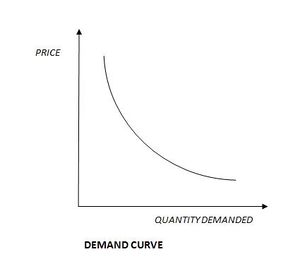Demand
| Demand |
|---|
| See also |
In economics demand is an amount of good which customers are willing to purchase at various prices.
The demand decreases when prices are rising this dependence is known as law of demand. In the reverse situation, where prices decrease the demand increases.
The demand creates a collection of goods and services, which are consumed at specified prices.
The demand curve is a graph illustrating negative relationship between the price of the good and the quantity demanded for this good when factors are constant.
Factors affecting the demand
There are some factors which have an impact on the demand curve and its position referring to the goods and services:
- changes in prices of complementary goods and services
- changes in income
- changes in preferences
- changes in expectations
- changes in the number of customers
See more: Factors affecting demand
In economics when demand is equal to supply the market is in equilibrium. The market clearing price define a price which equalizes the quantity demand with the amount of offered goods. The excess demand appears when the quantity needed exceeds the amount of goods which are offered at the specified price.
See also:
References
- Begg, D. K. (1982). The rational expectations revolution in macroeconomics: theories and evidence. Johns Hopkins Univ Pr.
- Bryant, R. C. (1989). Macroeconomic policies in an interdependent world. International Monetary Fund.
Author: Anna Klafczyńska
